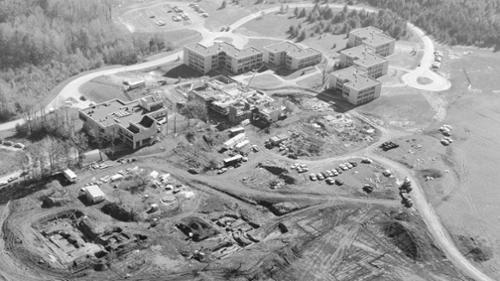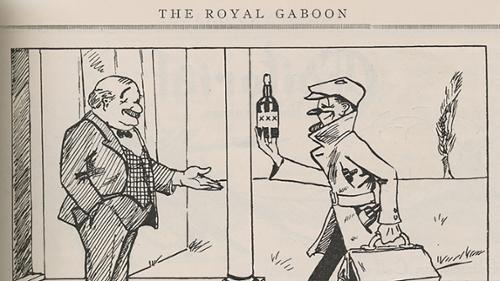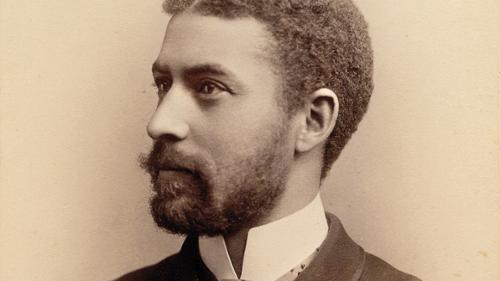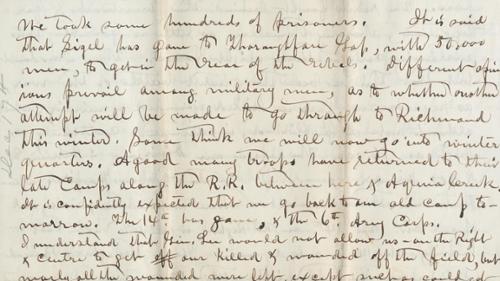All News
-
To help attract the Kirkland College charter class, the College’s new Admission Office, directed by Carole Walker, took the unusual step of taking out a full-page advertisement in the Dec. 29, 1967, issue of Time magazine. “When you send your daughter to college,” the advertisement asked provocatively, “will she get an education?” At Kirkland, it promised, in language designed to resonate with its target audience in that year of Sgt. Pepper, education would be “a mind-expanding experience.”
Topic -
During the 1920s, the Hamilton humor magazine the Royal Gaboon found a frequent target in Prohibition, which inspired student liquor runs across the Canadian border. No political issue in the 1920s served to define the decade so memorably, nor divided Americans so bitterly, as that of Prohibition.
Topic -
The Hamilton-Oneida Academy began as an experiment in interracial education, which proved an abject failure. Its successor institution, Hamilton College, made no claims to interracialism and indeed was a largely white institution throughout its first century of existence. The College enrolled only a single African-American student, Joseph Spurlarke, Class of 1889, in the years between its founding and the conclusion of the First World War.
Topic -
Rush Cady of Rome, N.Y., Class of 1862, was one of about 225 Hamilton College alumni who served in the Union Army during the Civil War, most of them as officers. (At least 11 served with the Confederacy.) Cady left college before graduating from Hamilton, joining the 97th Regiment of the New York State Volunteers. His letters home to his family provide a valuable first-hand account of one soldier's view of war; together with other documents related to his wartime service, they are preserved and available online in the digital collection of the Hamilton College Library.
Topic -
From the expeditions of the ancient world to the future of space exploration in the 21st century, Discovery and Exploration conveys the wonders, anxieties and satisfactions that explorers have felt since the beginning of time. Starting with a vivid scene-setting first chapter focusing attention on a key event, each book’s gripping narrative explores the topic, while firsthand accounts of incidents, climate and terrain offer a fresh perspective on discovery and exploration. Each volume also includes black-and-white photographs and illustrations; specially done, detailed maps; box features; an introduction or preface; a glossary; a further information list; and an index.
Topic -
In 2003, Americans began celebrating the bicentennial of the Lewis and Clark expedition (1803-1806), a journey of discovery that proved a seminal moment in the history of the exploration of the North American continent. With full coverage of the events leading to the Corps of Discovery's formation and its gripping adventures to the Pacific and back, Across America: The Lewis and Clark Expedition details the explorers' travels and trials. Tracing the various stages of their journey, it chronicles important factors and discusses everything from the founding of the exploration to the fates of the explorers.
Topic -
Most Americans first heard of Michael Harrington with the publication of The Other America, his seminal book on American poverty. Maurice Isserman, professor of history, expertly tracks Harrington's beginnings in the Catholic Worker movement, his abandonment of his once deeply-held Catholicism, his life in 1950s Greenwich Village, and his evolution as a thinker. Isserman explains why Harrington, who more than any other single individual seemed perfectly positioned to play the role of adult mentor to the New Left in the 1960s, instead fell into disfavor with young campus activists, and lost the opportunity of a lifetime to make his democratic Socialist perspective a relevant force in American politics.
Topic -
Arguing that the period marked the end of the country's two-century-long ascent toward widespread affluence, domestic consensus, and international hegemony, the authors, Maurice Isserman professor of history and Michael Kazin, take students on a tour of the turbulent decade, exploring what did and did not change in the 1960s and why American culture and politics have never been the same since.
Topic -
From 1916 to 1919, approximately half a million black southerners made the same trek northward; in the decade that followed, a million more joined them in the cities of the North. Filled with voices of hope and courage, Journey to Freedom by Hamilton History Professor Maurice Isserman, reveals the stories of the men and women who went looking for freedom, dignity, equal rights, and basic economic opportunity up north. Coverage also relates the far-reaching social, economic, and political consequences for the nation as a whole during this greatest internal mass migration of people in American history.
Topic -
Dorothy Healey was a member of the Communist movement in the U.S. from 1928 until 1973, leading the Southern California District for over 20 years. She is one of the few women to rise to power in the American Communist Party. She is a survivor of the epic labor struggles of California’s migrant workers in the 1930s and at one point even had a $10,000 price on her head, as she was hunted by vigilantes and police. Dorothy Healey Remembers: A Life in the American Communist Party, recounts her life in her own words, written in collaboration with William R. Kenan, Jr. Professor of History Maurice Isserman. Isserman edited and supplemented Healey’s engaging narrative. He fills the story, drawing from private letters, the recollections of friends and relatives, newspaper articles, and secret FBI documents.
Topic





